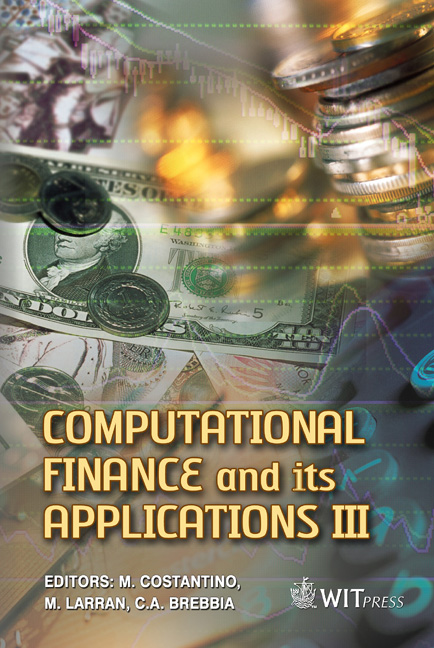Valuation Of Swing Options With Supplier Flexibility – Switching And Recall Features: A Methodology Note
Price
Free (open access)
Volume
41
Pages
8
Page Range
63 - 70
Published
2008
Size
532 kb
Paper DOI
10.2495/CF080071
Copyright
WIT Press
Author(s)
S. Persad
Abstract
This paper presents a method for valuation and risk/sensitivity analysis of swing contracts with switching and/or recall features. Standard swing options allow natural gas customers to exercise a limited number of call features over a period (month) to select the optimal amount of energy to receive each period (day) at a given strike price. More complex versions of these instruments also allow the supplier some flexibility. Two supplier-friendly features are discussed in this paper: (1) Switching features: the supplier must fulfil the buyer’s nomination in full, but has a choice of which commodity/delivery location to supply (2) Recall Features: the supplier may recall some of the buyer’s nomination amount. This paper offers an algorithm for backward solution. The method draws from Jaillet, Ronn and Tompaidis (2004, Valuation of commodity based swing options. Management Science Vol. 50, Iss. 7, pp. 909–921) by using a forest of trees to represent remaining swing rights, but extends it to a two player (customer and supplier) setting. At each stage the players gather the relevant nodes to which they can transition and engage in a Stackelberg game to determine the optimal action. At each point, the game’s outcome is determined employing the game theoretic concept of subgame perfect Nash equilibrium. Because different locations for gas delivery are essentially separate but related markets, the underlying prices to be constructed are two gas locations with a specified correlation. This paper employs Rubenstein’s (\“Somewhere Over the Rainbow”, RISK 4 (November 1991), pp. 63–66; \“Return to Oz”, RISK 7 (November 1994), pp. 67–71) pyramid methodology for modelling correlated asset price processes. In addition, we adapt the Hull and White (1994, Numerical Procedures for Implementing Models I: Single Factor Models, Journal of Derivatives Vol 2, pp 37–48) procedure for incorporating drift so that our price pyramid captures the mean reversion feature of natural gas. Finally we make adjustments so that the simulation captures seasonality of natural gas prices. Keywords: path-dependent option pricing, correlated trinomial tree, lattice, swing options, energy options.
Keywords
path-dependent option pricing, correlated trinomial tree, lattice, swing options, energy options.





